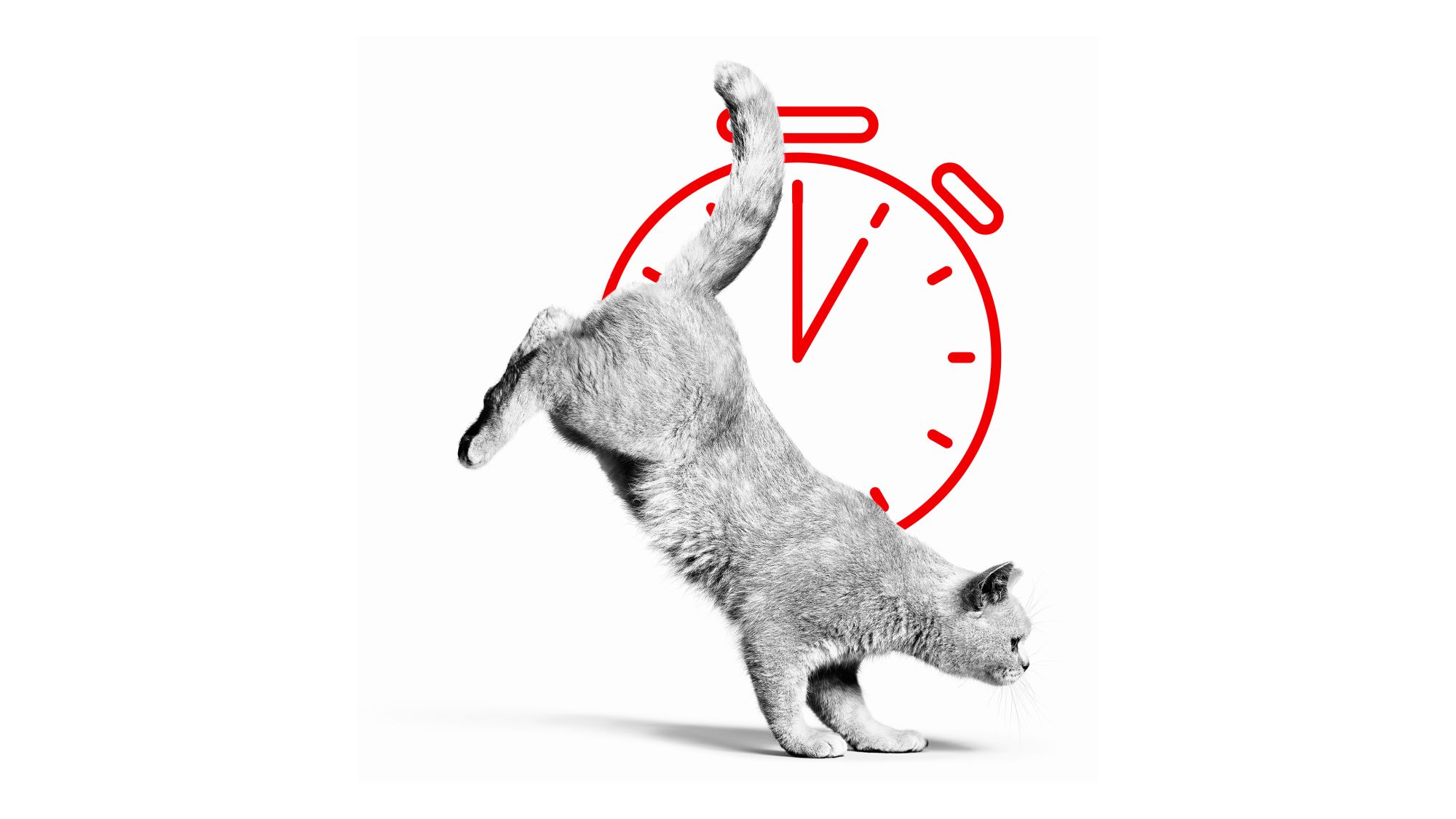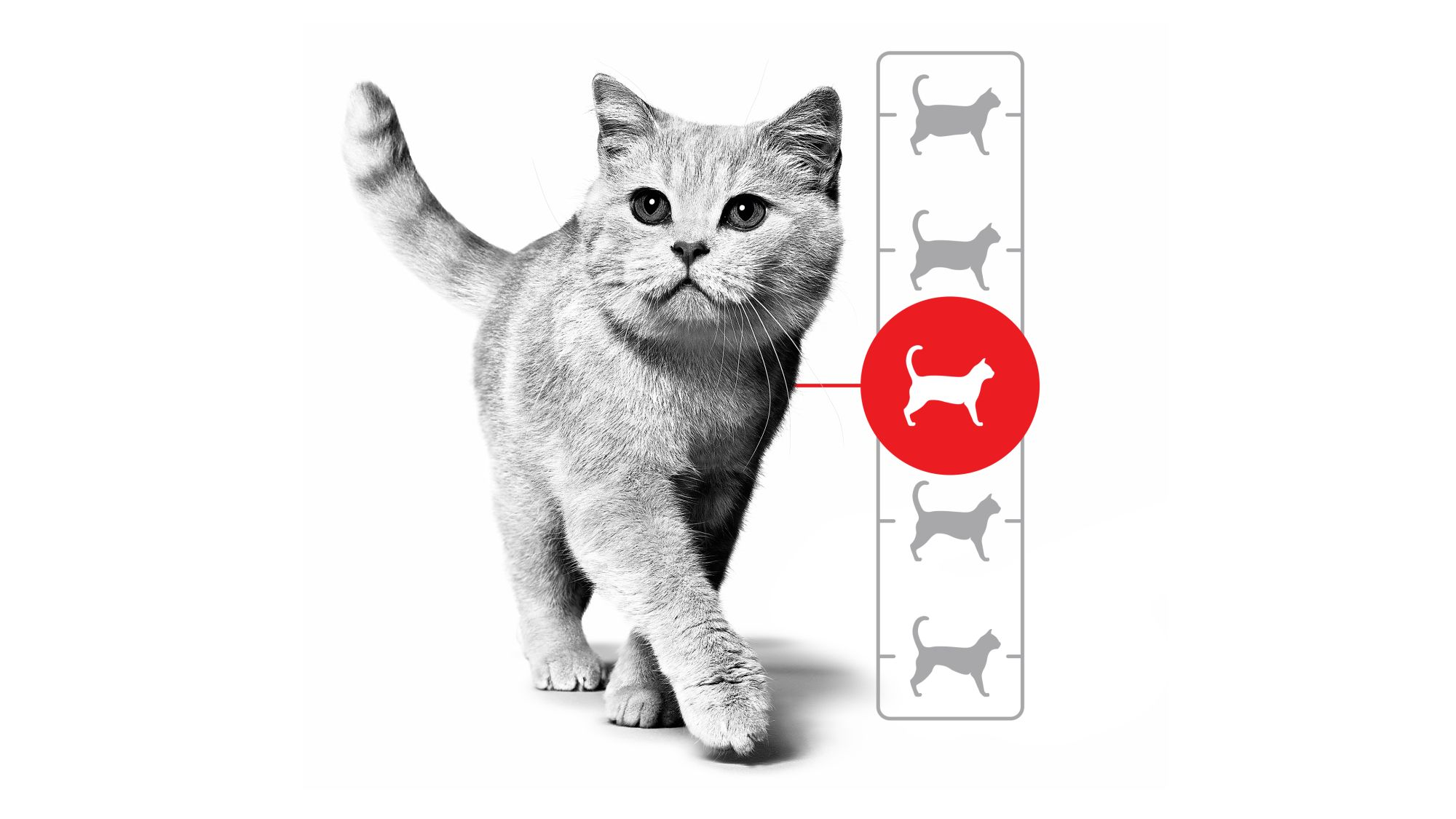
Healthy weight isn't only measured on a scale

What is a cat’s body condition score?
The body condition score uses a 9-point system that goes from emaciated at 1 to severely obese at 9. The three key factors assessed for the score are your cat’s ribs, waist and abdomen. A cat with a score of 5 is the ideal shape. This means they’re well proportioned with ribs you can easily feel, a waist you can see from above and an abdomen that tucks up behind their rib cage when seen from the side.
Your vet can help you work out your cat’s body condition score. It’s also important to take your cat for regular visits so your vet can help you monitor their shape as they age.
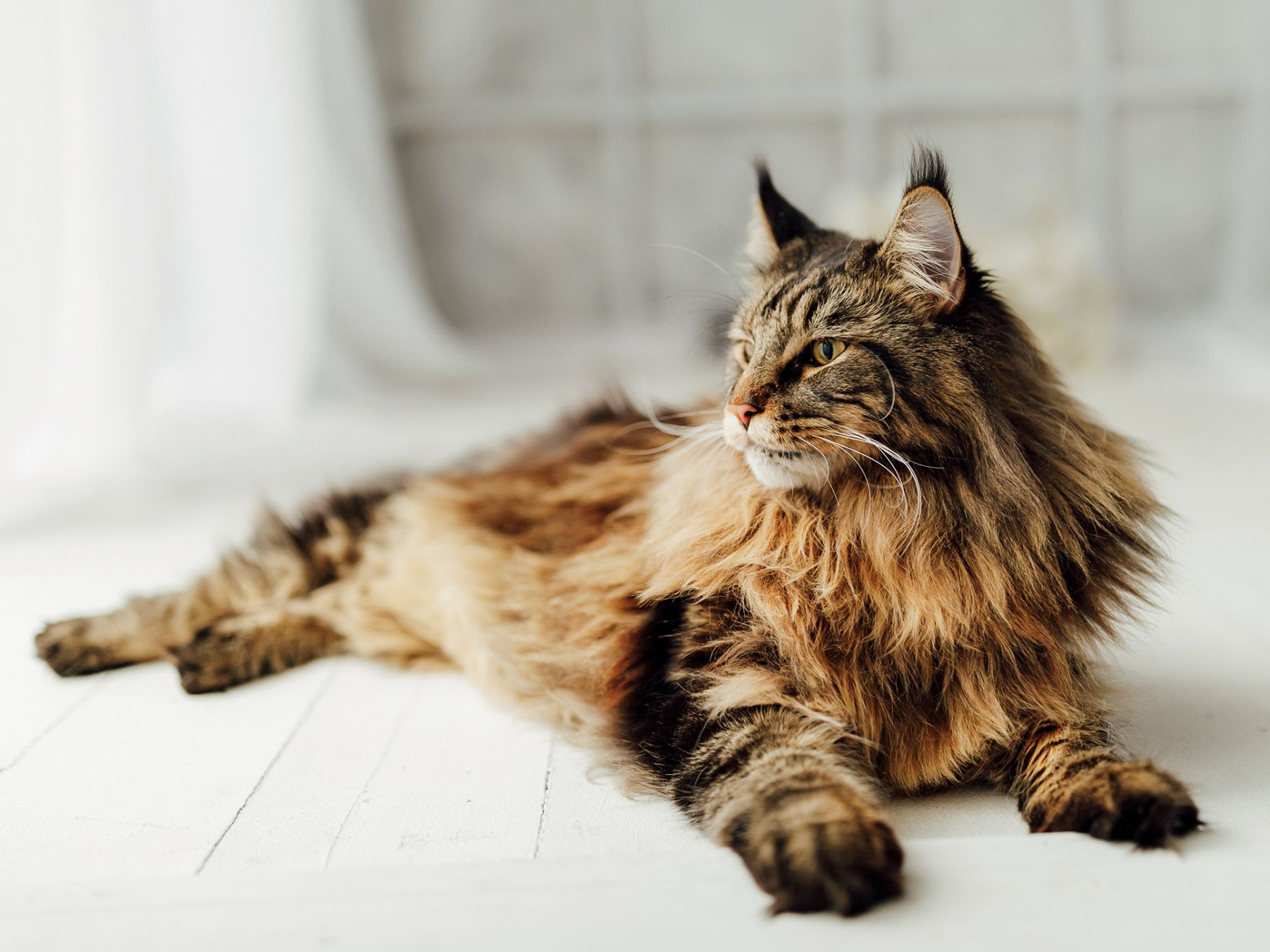
What are the signs my cat is overweight?
First, look at your cat’s behaviour. Are they somewhat lethargic and get tired quickly? Next, does their stomach sag or can you see their waist and the tuck of their abdomen behind their ribs? Next, check their ribs. Can you feel them with light pressure? Thirdly, weigh your cat and make a note so you can compare next time. Your vet can give you an indication of your cat's ideal weight based on their current weight and using the body condition score.
This kind of monitoring is vital as an overweight cat is more likely to suffer serious and life-changing conditions. These can include diabetes, cancer, osteoarthritis, cardiovascular disease and an increased risk of urinary tract disease. Keeping your cat in shape is key to maintaining a healthy life.
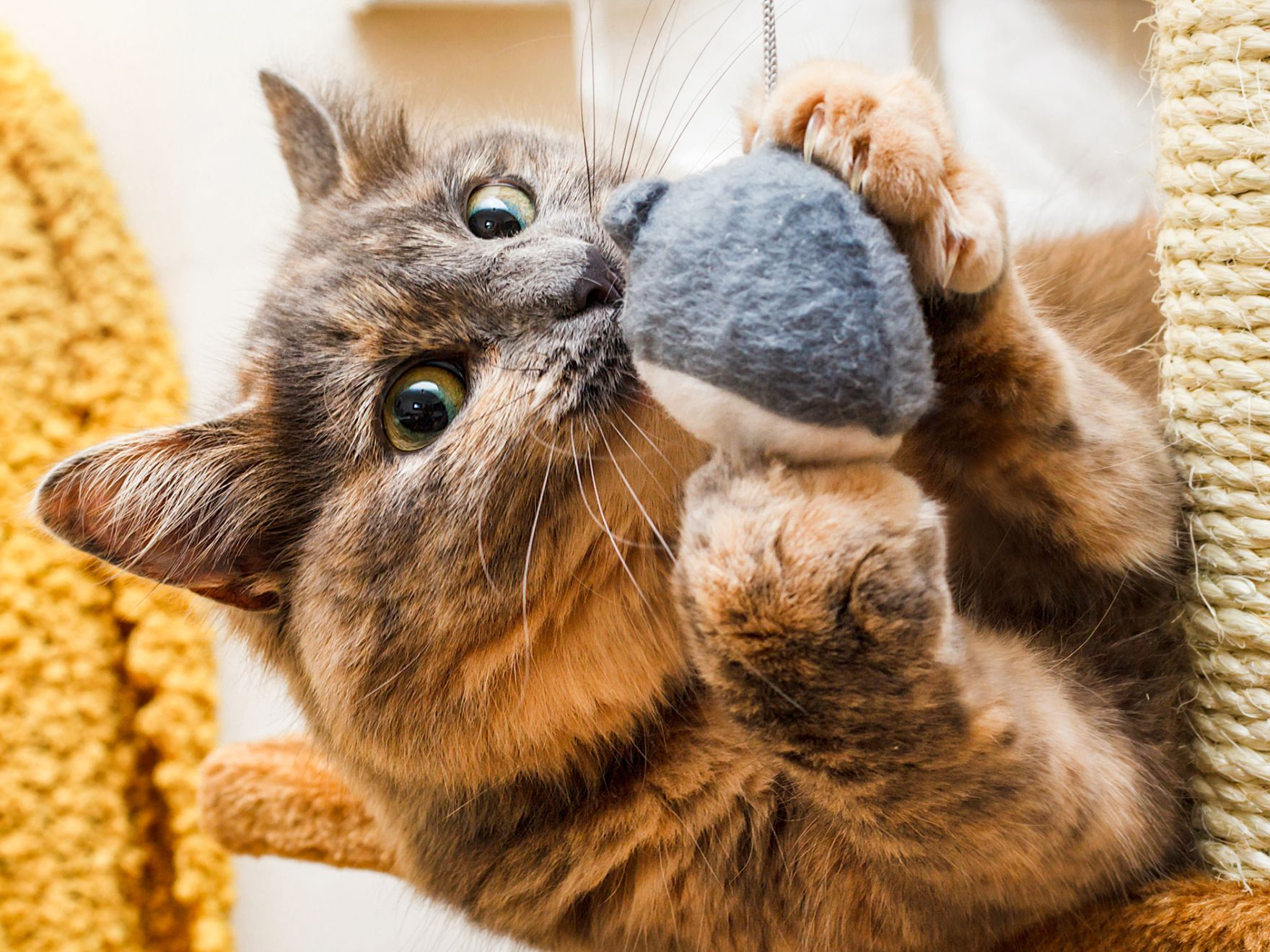
How to help your overweight cat lose weight
Cats become overweight when they eat more calories than they use, so the first thing to address is their food. Ask your vet about formulas designed specially for overweight cats, because if you just decrease meal sizes with their current food it could cause nutritional deficiencies. Stick to the portion size on the pack and give them a space to eat alone. Cats are solitary hunters and shared feeding spaces could lead to stress-induced issues such as overeating.
Regular physical activity is also essential for keeping your cat in healthy shape and for their overall wellbeing. Give them plenty of toys and things to climb, particular if they’re kept mainly indoors, and play games with them regularly each day.
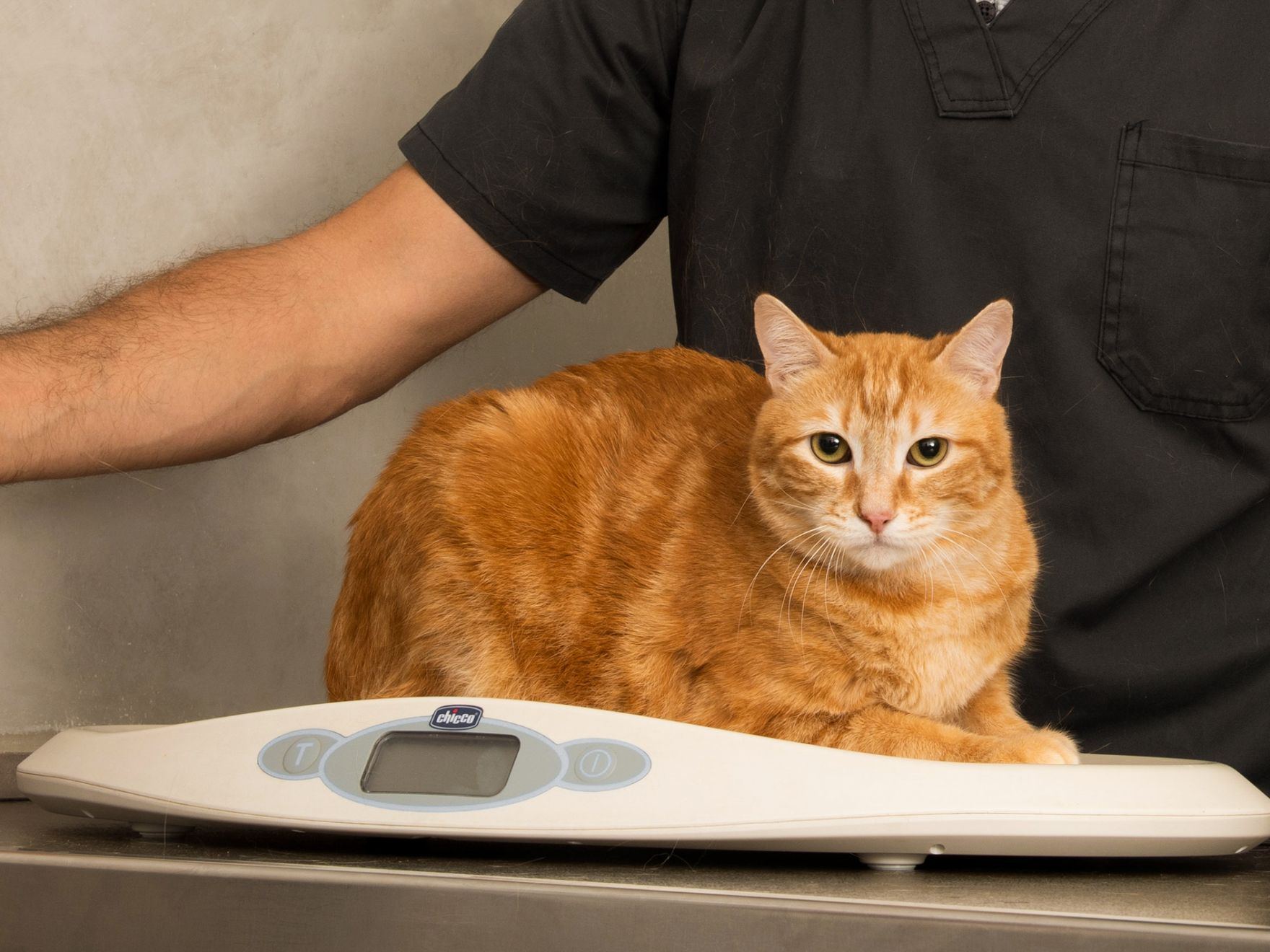
Speak to your vet
It’s also important to speak to your vet before you make any changes to your cat’s diet or lifestyle, or make any other decisions that could affect their health.
No two cats are the same, so your vet can give you advice tailored to your cat as an individual. This will be based not just on their breed, age and sex, but on factors such as any existing health conditions and whether or not they’ve been spayed or neutered.
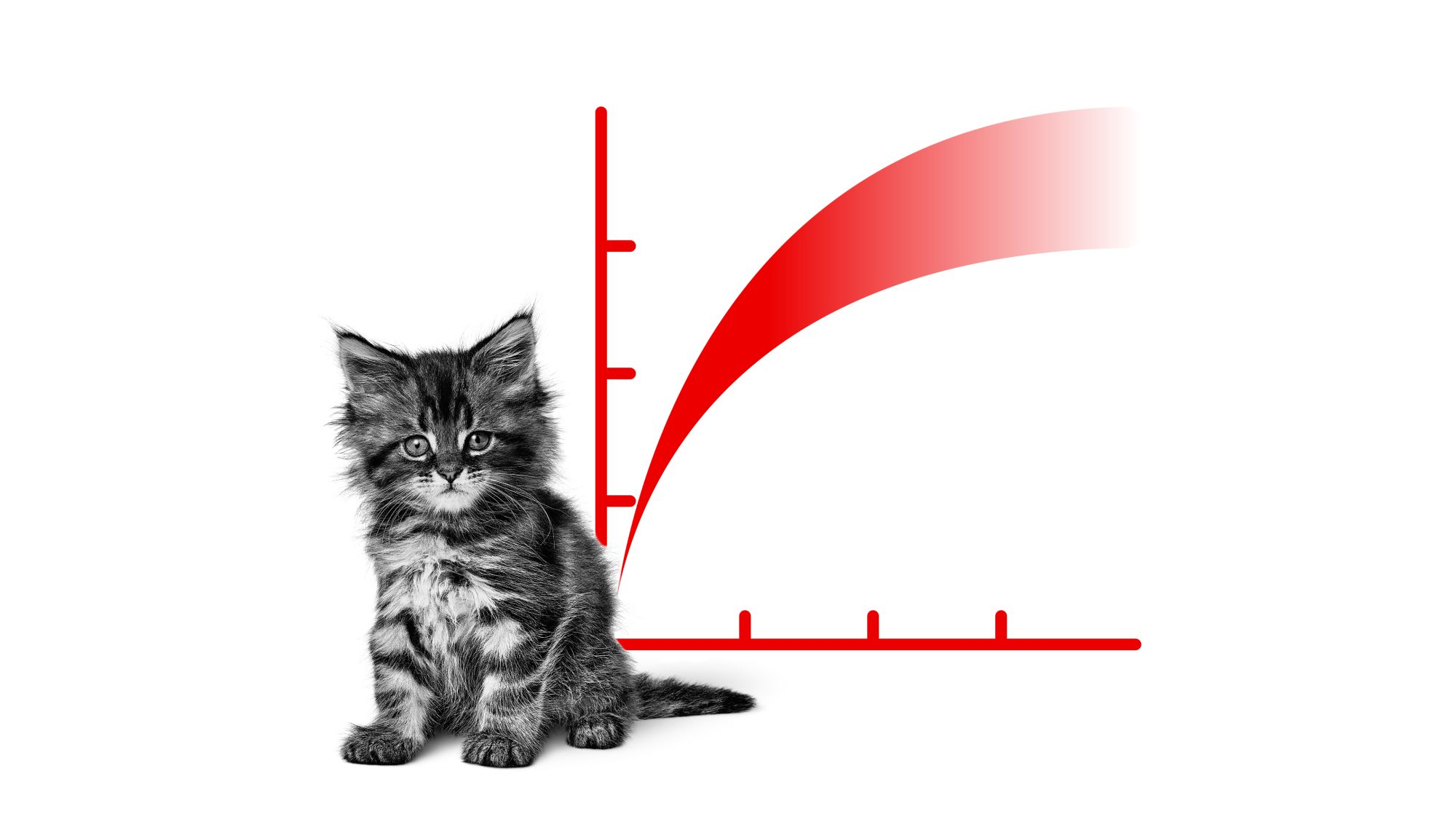
Healthy growth lasts a lifetime
